Table of contents
Discover the best teas for lowering triglycerides and cholesterol!
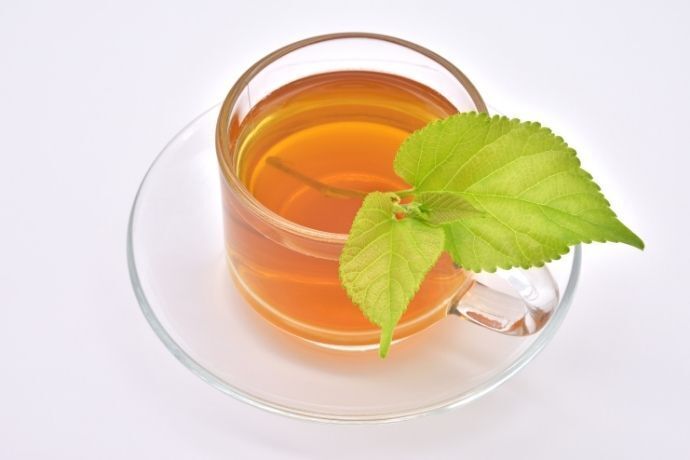
Sometimes natural options are a healthier alternative, rather than opting for pharmacy remedies. Teas to lower triglycerides and cholesterol can be not only a healthier and more sustainable option, but also a more delicious one, combining the useful with pleasure.
There are several types of tea that can be used to lower triglycerides and cholesterol, the two big villains that haunt our routine exams, causing a series of diseases such as heart attacks, strokes and increased blood pressure.
Whatever tea you drink, pay attention to contraindications and overconsumption. If the drink has been recommended by your doctor, respect the prescription correctly.
Understanding triglyceride and cholesterol levels
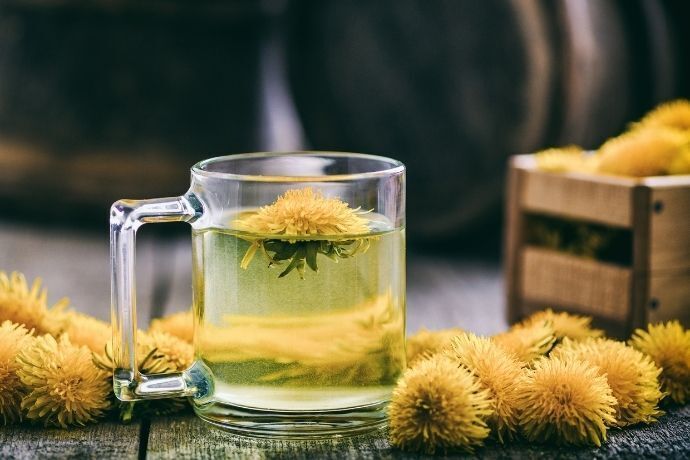
Both cholesterol and triglycerides, if high, can lead to various health problems. We'll talk more about these two types of fat and the risks they pose to our bodies when high, as well as how to lower their levels in our bodies.
What are cholesterol and triglycerides?
Cholesterol is a type of fat that is present in various cell structures in our body, such as the intestine, heart, skin, liver, brain and nerves. It is also very important for the formation of our hormones, vitamin D, and also for the production of stomach acids.
There are two types of cholesterol: LDL (low-density lipoprotein), the bad cholesterol that is considered the most harmful type, as it accumulates in our arteries, causing cardiovascular disease, and HDL (high-density lipoprotein), the good cholesterol that is responsible for removing the bad cholesterol from our arteries.
Triglycerides, on the other hand, are fat that serves as an energy reserve, stored in our adipose tissue within fat cells, waiting to be used in some activity in which there is a high energy expenditure.
Possible causes of high triglyceride and cholesterol levels
High levels of triglycerides in the blood can be related to diets rich in saturated fats such as fried foods and carbohydrates. Hormonal problems such as insulin resistance and hypothyroidism can also affect the amount of triglycerides in the body.
Other factors such as alcohol abuse, the use of medications such as corticosteroids and contraceptives, and diuretics can also affect the increase in triglycerides. High cholesterol can be caused by poor diet, abuse of foods high in fat and sugar, smoking, a sedentary lifestyle and a person's own family history.
Dangers of high triglyceride and cholesterol levels
Excess triglycerides can cause our heart vessels to clog up and this can have serious consequences such as strokes, heart attacks and even an increase in blood pressure. Diseases such as pancreatitis and hepatic steatosis (fat in the liver) are also correlated with an increase in triglycerides.
High cholesterol is linked to the presence of cardiovascular diseases. Hypercholesterolemia, which is the increase and excess of cholesterol in the body, can cause atherosclerosis, which is the increase of fatty plaques in the arteries, as well as high blood pressure and the risk of heart attacks and strokes.
How to lower triglyceride and cholesterol levels?
In order to lower triglycerides, it is necessary to reduce sugar and carbohydrate consumption, increase fiber intake, exercise daily, eat every three hours, i.e. not fasting, and eat foods rich in omega-3 such as saltwater fish and nuts.
To lower cholesterol, it's important to cut down on alcohol, sugars and carbohydrates, lose weight, eat foods rich in omega-3 and exercise regularly.
Benefits of teas for lowering triglycerides and cholesterol
If you want a healthier option for lowering triglycerides and cholesterol without having to use medication, teas can be a good option for your health. They help to detoxify the body as well as having hypoglycemic properties that help to lower fat levels in the blood.
Green tea
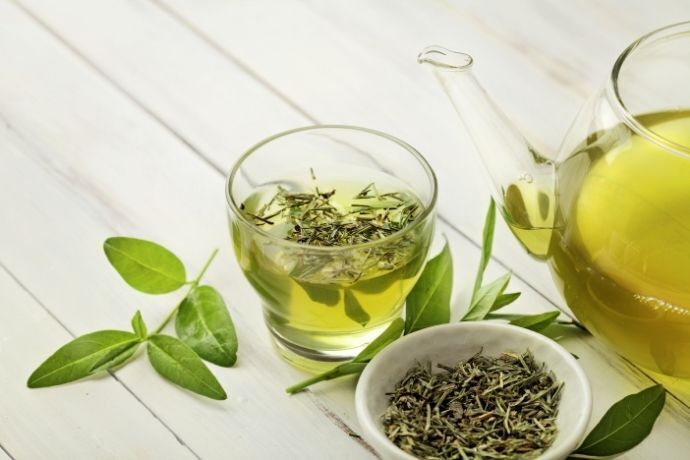
Green tea is produced from the Camellia sinensis plant, native to southern China and northeastern India. It can be consumed both hot and cold. The drink is also very popular in Japan, and there are even sweets made from it.
Indications and properties of green tea
Green tea is full of antioxidants such as catechins and flavonoids, as well as amino acids, vitamins B, C, E, iron, zinc, calcium and potassium, making it ideal for lowering levels of bad cholesterol (LDL) and triglycerides.
It is also ideal for those who want to lose weight due to its compound, epigallocatechin gallate, which increases energy expenditure. It is also very good for digestion and can be consumed after meals, reducing the absorption of fats and helping to digest fatty foods.
Ingredients
To prepare green tea, you will need a spoonful of green tea and a 240 ml mug of boiling water.
How to make green tea
Pour a tablespoon of green tea into a mug filled with 240 ml of water, then place a saucer over your mouth and leave to stand for about ten minutes. Strain the liquid and drink it lukewarm. Take four cups a day between meals.
Cautions and contraindications
Green tea is contraindicated for pregnant or breastfeeding women, and people with insomnia, gastritis, ulcers and hypertension should avoid it, as it contains caffeine. It should also be avoided by those taking anticoagulants or who have hypothyroidism.
Artichoke tea
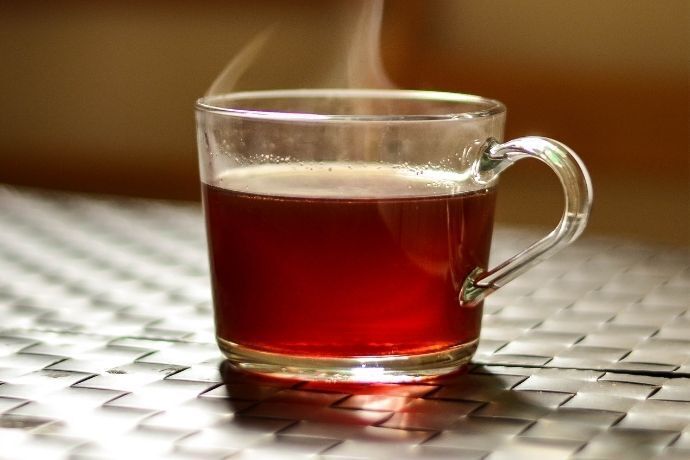
Also known as hortense artichoke, common artichoke or eating artichoke, it is a plant full of nutrients and health benefits.
It can be found in supermarkets and fairs, and its leaves can be found in pharmacies or natural and herbal products stores. It can be eaten in the form of salads, stews, roasts, juices or even teas.
Artichoke indications and properties
Artichokes are rich in flavonoids, vitamin C, phosphorus and potassium, as well as serving as an antioxidant, anti-inflammatory, diuretic, pro-biotic and antidyspeptic (which fights bad indigestion).
It helps to prevent diseases such as obesity, diabetes and heart attacks by reducing the levels of glucose and cholesterol in our bodies. It also helps to lose weight, as it helps to control our appetite and also to eliminate excess fluid in our bodies.
Ingredients
Between 2 and 4 grams of artichoke and 240 ml of boiling water.
How to make artichoke tea
Take a mug and boil 240 ml of water, then add the artichoke leaves and leave to stand for around five minutes. Strain the liquid and drink two to three cups a day before eating.
Cautions and contraindications
Artichoke tea is contraindicated for women who are pregnant or breastfeeding, people with bile duct obstruction, hypertension, heart disease and children under 12 years of age.
Parsley tea
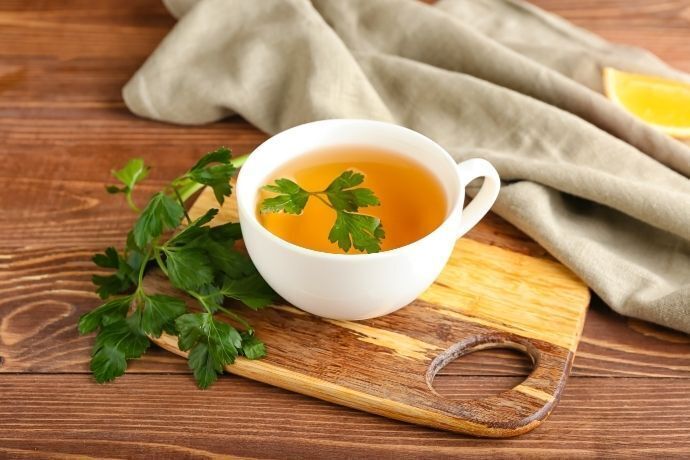
Parsley, also known as parsley, can be found in its three main variations: flat, curly and German, in supermarkets or at marketplaces. It can be used in the kitchen as a seasoning and also for medicinal purposes due to its properties.
Indications and properties of Parsley
Parsley contains many vitamins, including A, B, C, E and K, as well as iron, folic acid, copper, magnesium, eugenol, limonene, apigenin and luteolin. It has anti-inflammatory, anti-carcinogenic, antioxidant and detoxifying properties.
Parsley as well as its tea is recommended for people suffering from respiratory diseases such as asthma, helps improve immunity, is a great natural diuretic and is also recommended for women suffering from menstrual cramps.
Ingredients
To make the tea, you will need 30 grams of parsley, a liter of water and a lemon to taste.
How to make parsley tea
Bring the water to the boil in a kettle and as soon as it finishes boiling, add the parsley leaves to the water and leave to infuse for fifteen minutes. Once the infusion is complete, add a few drops of lemon to taste as desired, then serve and drink.
Cautions and contraindications
Parsley tea should be avoided by pregnant women and women who are breastfeeding their children, as well as patients diagnosed with nephrosis (kidney disease). It should not be consumed in excess, as it can have serious consequences such as affecting hearing and the kidneys, as well as vertigo problems.
Dandelion tea
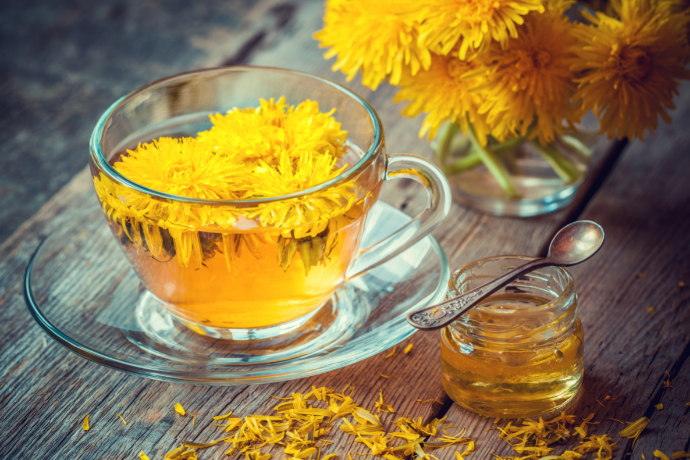
Also known as monk's wreath, taraxac and pint, this plant has many nutrients and properties that can benefit our bodies. It can be consumed as a tea, as a juice, in salads, soups and even desserts.
Indications and properties of Dandelion
This plant has antioxidant, anti-inflammatory and diuretic properties, helping us to lose weight and eliminate toxins from our bodies.
It contains vitamins A, B, C, E and K, helping to strengthen the heart, brain and immunity. It also contains flavonoids, which are great for our liver, and is a great source of potassium, calcium and iron.
The plant helps control diabetes by lowering blood glucose levels, helps prevent cancer thanks to its natural antioxidants, and improves gastrointestinal health. According to research carried out in China in 2011, dandelion tea has some efficacy in fighting the influenza virus, which is responsible for the common cold.
Ingredients
You will need two teaspoons of crushed or powdered dandelion root and 200 ml of boiling water.
How to make dandelion tea
Boil the water well, then add the dandelion root and leave to stand for about ten minutes. Strain the liquid and drink it up to three times a day. For gastrointestinal problems, drink the tea before eating.
Cautions and contraindications
People with obstructed bile ducts, intestinal occlusions, ulcers and acute inflammation of the gallbladder should avoid consuming dandelion tea. Although the plant's effects on pregnant or breastfeeding women have not yet been confirmed, it is best to avoid consuming it during this period.
If you are using diuretic or hypoglycemic drugs, you should also avoid using this tea, as it can potentiate their effects.
Red tea

Also known as Pu-erh, named after Pu'er, a county in Yunnan in China, it is made from the extraction of the Camellia sinensis plant, which is also the same plant used to make green, black and white tea, and it is the fermentation process that gives the tea its red color.
The fermentation process uses the Streptomyces cinereus strain Y11 bacteria for a period of 6 to 12 months. When the tea is of the highest quality, it can remain in this process for up to 10 years.
Indications and properties of red tea
This fermentation has led to an increase in various substances that are beneficial to our bodies, such as flavonoids, which have antioxidant and anti-inflammatory properties that help to improve the health of our skin and protect against ageing.
Caffeine and catechins are two substances present in tea that help speed up the metabolism, making you more willing to do physical activities and helping you lose weight.
The drink also has a calming effect as it contains polyphenols, which are responsible for lowering cortisol levels in the blood, which is responsible for making us stressed.
Ingredients
To prepare this tea, you will need one tablespoon of red tea and 240 ml of boiling water.
How to make red tea
Bring the water to the boil in a mug, then let it steep for about one to two minutes. Pour in the red tea and let the mixture steep for ten minutes. The drink can be consumed either hot or cold, but it should be drunk on the same day.
Cautions and contraindications
Red tea should be avoided by hypertensive patients, pregnant women, breastfeeding women and those who use medication such as anticoagulants and vasoconstrictors. Those who suffer from insomnia should also avoid the drink due to the presence of caffeine, and therefore avoid drinking it before bedtime.
Turmeric tea
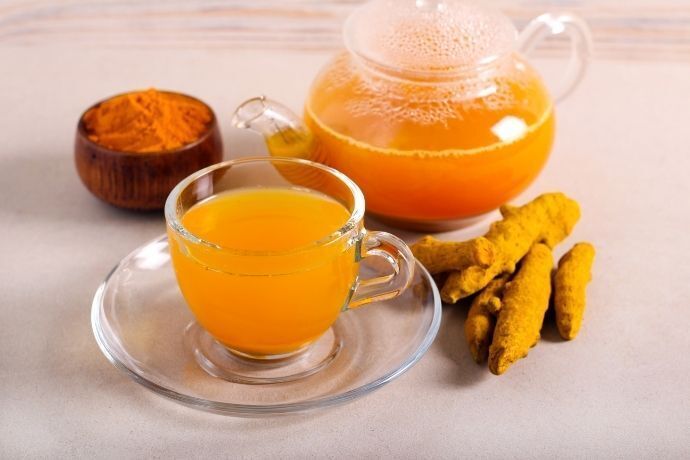
Also known as turmeric, saffron or tumeric, this root is very popular in eastern countries such as India in powder form for seasoning meat and vegetables.
Turmeric, whose scientific name is Cúrcuma longa, lives up to its name, with long, shiny leaves that can reach 60 cm in length and orange-colored roots. It can be found in health food stores and markets, either in capsule or powder form.
Indications and properties of Turmeric
It has antioxidant and antibacterial properties, helping with digestion, reducing cholesterol, losing weight, treating colds and fevers, and relieving skin problems such as acne, psoriasis or even helping the skin to heal. It can also help with the symptoms of premenstrual tension, the famous PMS, in women.
Ingredients
One teaspoon of turmeric powder and 150 ml of hot water.
How to make turmeric tea
Boil the water well, then add a teaspoon of turmeric powder to the water and let the mixture stand for 10 to 15 minutes. After the drink has cooled down, drink up to three cups a day between meals.
Cautions and contraindications
Pregnant and breastfeeding women should avoid using this tea, as should patients taking anticoagulants or with gallstones. Excessive use should also be avoided, as it can cause stomach irritation and nausea.
Black tea
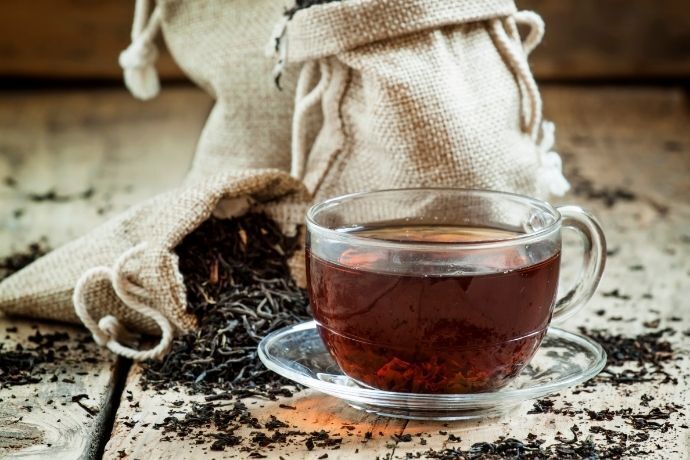
Black tea is made from the leaves of the Camellia sinensis plant, which are oxidized to obtain a stronger, more intense flavour. Tea can be found in supermarkets in the form of ready-made sachets or in bulk in herbal or natural products stores.
Indications and properties of black tea
Black tea is made up of several important substances for our bodies, including antioxidants such as catechins and polyphenols, tannins, alkaloids and caffeine. The drink helps control diabetes, lose weight, improve digestion and prevent diseases such as heart attacks and even cancer.
It also helps keep our skin healthier and cleaner, combating the dreaded acne and oiliness, lowers blood cholesterol, and also helps our brain stay alert, keeping us awake because of the caffeine.
Ingredients
You'll need a cup of boiling water and a sachet of black tea or a spoonful of dried black tea leaves. You can also add warm milk or half a lemon to taste.
How to make black tea
Boil the water well, then add the sachet or black tea leaves to the water and leave to stand for five minutes. Strain the mixture and drink, if you prefer, add warm milk or lemon to taste.
Cautions and contraindications
Tea should be avoided by babies, children under 12 years of age, pregnant women and nursing mothers. People diagnosed with high blood pressure should also stay away from the drink, as the presence of caffeine can have a hypertensive effect.
People with anemia or iron deficiency should also avoid drinking the tea, as the presence of tannins in the drink makes iron absorption less effective, and it is recommended to drink the tea an hour before the main meals.
Avoid overdoing it, such as drinking more than five cups of black tea a day, as side effects such as insomnia, headaches and stomach aches, dizziness, irritability, vomiting, nervousness and body tremors can occur.
Mate tea
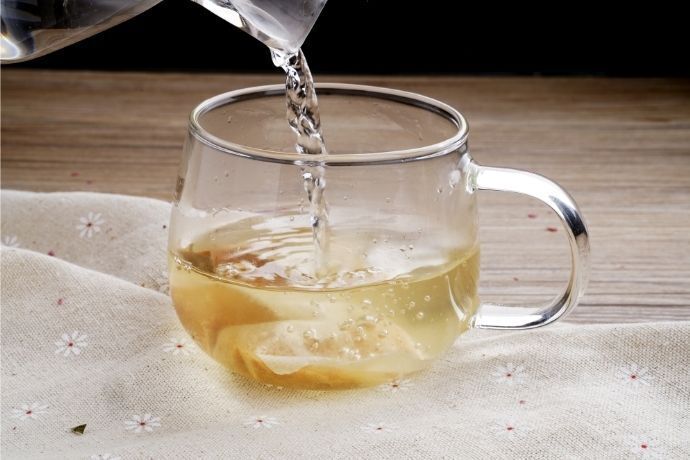
Mate tea is a drink made from the leaves and stalks of the mate herb, whose scientific name is Ilex paraguariensis. It can be consumed as a tea through the bags sold in supermarkets, as an infusion or as the iconic chimarrão, a popular drink in the southern region of Brazil.
The tea can be found in health food stores, street markets and supermarkets in the form of bags or dried leaves and stalks.
Indications and properties of mate tea
The drink contains polyphenols, caffeine, flavonoids, vitamin B, C, selenium, zinc and antioxidant properties. It is indicated to help you lose weight, fight tiredness, improve attention and concentration, lower bad cholesterol, control diabetes, prevent cardiovascular diseases such as heart attacks and strokes, and also strengthen the immune system.
Ingredients
A tablespoon of roasted yerba mate leaves and a cup of boiling water. If you prefer, you can add lemon to taste.
How to make mate tea
Bring the water to the boil and then add the yerba mate leaves. Cover the mixture and leave it to stand for five to ten minutes. Strain the drink and serve. Add a few drops of lemon to the tea if you prefer. You can consume around 1.5 liters a day.
Cautions and contraindications
Mate tea is contraindicated for pregnant women, nursing mothers and children, as well as people suffering from insomnia, anxiety, nervousness and high blood pressure due to the presence of caffeine in its composition. Diabetics should drink the beverage with their doctor's knowledge and preferably with a prescription.
People who use drugs that inhibit monoamine oxidase (MAOIs), used to treat the symptoms of depression such as selegiline, moclobemide, isocarboxazid, phenelzine, nialamide, iproniazid and tranylcypromine.
Excessive consumption can lead to side effects such as insomnia, headaches and increased blood pressure. Prolonged use can also lead to the development of cancer in both the respiratory and digestive tracts due to the presence of aromatic hydrocarbons that have a similar effect to cigarette smoke. Therefore, it is best to ingest it without overdoing it.
Cinnamon tea
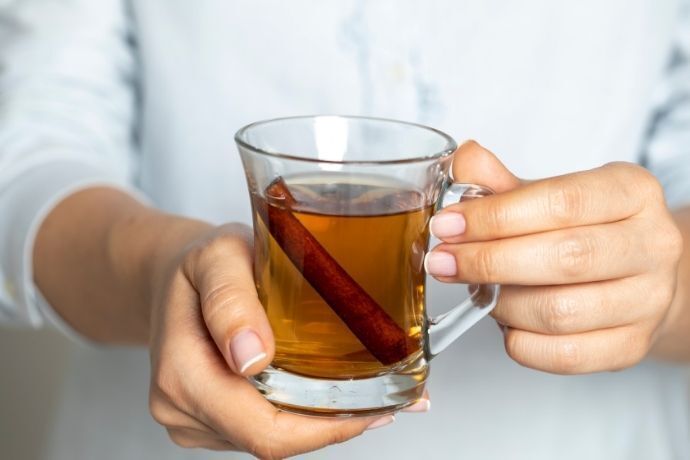
Cinnamon is an aromatic spice that is obtained by extracting the inner bark of trees of the genus Cinnamomum, which can be used either in the form of cinnamon sticks or as a powder.
Whether in the form of sweets, savory snacks or even as a tea, cinnamon is a good choice, as it contains a number of nutrients and properties that are essential for our bodies. It can be found in supermarkets, fairs or health food stores in the form of powder, cinnamon sticks or bark.
Indications and properties of cinnamon
It is rich in flavonoids such as eugenol and linaool, which have antioxidant and anti-inflammatory properties that help prevent diseases such as cancer, diabetes and heart attacks.
It also helps to improve metabolism, making our body burn excess fat and also improving our concentration, making us more alert, thanks to cinnamaldehyde.
Its antioxidants also help to improve our mental health, i.e. cinnamon prevents diseases such as Parkinson's and Alzheimer's.
It also helps to improve mood thanks to its anti-inflammatory properties, which prevent inflammation of the cells of the central nervous system, increasing the production of serotonin.
It is also considered an aphrodisiac, improving blood circulation, increasing sensitivity, libido and pleasure during sex.
Ingredients
To prepare cinnamon tea, you'll need a cinnamon stick, a 250 ml mug of water and half a lemon.
How to make cinnamon tea
Insert the cinnamon stick into the jug of water and boil on the stove for 10 to 15 minutes, then leave the liquid to cool. Remove the cinnamon stick and add a few drops of lemon to taste.
Cautions and contraindications
Cinnamon tea is not suitable for pregnant or breastfeeding women, as it can trigger miscarriage, and people with stomach ulcers and liver diseases should also stay away from the drink.
Babies and children should be more careful when they have a history of asthma, allergies or skin eczema.
Enjoy the benefits of teas to lower triglycerides and cholesterol!
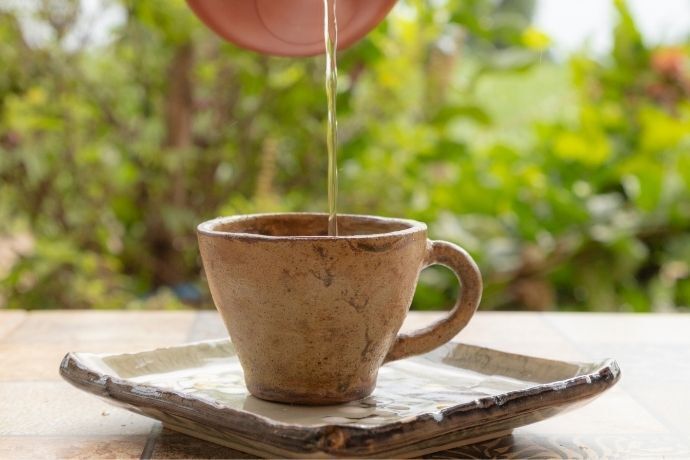
If you've had a routine test and ended up detecting an amount of triglycerides or cholesterol above the normal limit, either because you overdid it in the days before the test or because you have a family history of high cholesterol, teas that promise to reduce these types of fats can be a healthy and natural option for controlling high levels.
Whether it's black, green, artichoke, cinnamon, turmeric or dandelion tea, they are all very healthy options and not only help to control high triglyceride and cholesterol levels, but also help with various other factors, such as preventing us from diseases such as cancer, heart attacks, degenerative mental illnesses, improving colds and asthma, losing weight and also improving the symptoms of thePMS in women.
However, bear in mind that although these teas have many benefits for our health, remember to consume them with great caution, without exaggeration that could lead to side effects.

